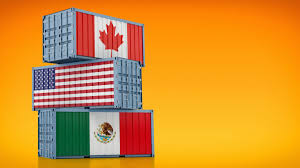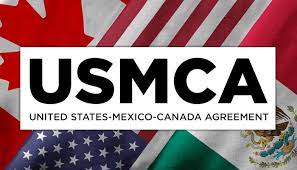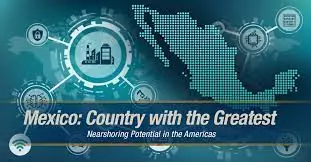Origins in Bilateral Trade
Since the beginning of the 1980s, Americans have seen the “Made in China” label on most everyday products. For the next forty years, this phenomenon took over most American products. In 1979, America recognized and established formal diplomatic relations with the PRC (People’s Republic of China). The U.S. recognized the PRC as the official legitimate government of China, which it did not prior, and cut ties with Taiwan. Once the U.S. changed its tune, bilateral trade relations were established and started modestly, with the U.S. mainly exporting agricultural products and raw materials.
Throughout the 1990s and early 2000s, trade between the U.S. and China snowballed. After imposing economic reforms and entering the WTO (World Trade Organization) in 2001, China’s trade relationship with the U.S. skyrocketed. Some of the most popular imports from China included electronics, textiles, and toys. In time, the U.S.-China bilateral trade relationship became one of the most significant trade relationships in the world.
Despite the economic benefits of trade and offshoring with China, the trade relationship was not without challenges and tension. Eventually, as the trade relationship with China progressed, the U.S. began to run a trade deficit with China. These circumstances led to concerns regarding industry job losses and unfair trade practices. Some key points of concern for the U.S. included I.P. theft, currency manipulation, and market access.
Despite proposed bilateral trade agreements and attempts to settle trade disputes, the disagreements and tensions persisted. The result was multiple rounds of tariffs and counter-tariffs from each party that lasted into the 2020s. Discussions between the U.S. and China continue, but a variety of events, including U.S. tariffs on China (2018), NAFTA vs UMSCA (2020), COVID-19, Logistics Disruptions, and the Russia-Ukraine war have all contributed to the decision to begin nearshoring manufacturing to Mexico.
What is Nearshoring?
Nearshoring is the outsourcing of manufacturing to a nearby or neighboring country, but it can also refer to the transferring of manufacturing processes to a closer geographic region. Many companies find that nearshoring provides various benefits such as time zone, geographic, linguistic, cultural, economic, historical, and political proximity and similarities. Nearshoring can also mean offloading responsibilities and jobs to nearby countries, allowing operations to be closer to the customer base.
Due to the uncertainties and conflicts of the U.S.-China trade processes, the rise of nearshoring in Mexico has increased over the past decade. Concerns over cost and quality of production, and especially I.P. theft, have caused the U.S. to search for additional trade partnerships. Nearshoring in Mexico provides many advantages to both the U.S. and Mexican economies. U.S. businesses are intrigued by the benefits, including reduced travel time to Mexican plants and reduced number of corporate travels. Other vital benefits include time zone alignment, cost savings, beneficial trade conditions, lower labor costs, and a growing market.
Despite the current trend, nearshoring to Mexico is nothing new and is a decades-old practice. During the 1990s and early 2000s, the practice gained significant traction. Back in 1994, the NAFTA (North American Free Trade Agreement) went into effect, which eventually evolved into (USMCA), which encouraged business between the U.S., Canada, and Mexico. The agreement effectively reduced tariffs, trade barriers, and other blocks to cross-border commerce. With this agreement, Mexico became a preferred destination for nearshoring. The Maquiladora program was another reason businesses were attracted to Mexico. The program allowed foreign companies to create manufacturing operations, as well as benefit from beneficial tax and tariff conditions.
Today, modernized agreements have maintained Mexico’s reputation as a lucrative nearshoring destination. Businesses from Industries ranging from I.T. to Aerospace have enjoyed the benefits of nearshoring to Mexico. Some American brands that have successfully nearshored to Mexico include Whirlpool, Honeywell, and General Motors.
Lucrative Agreements
In contrast to the turbulence and uncertainty of the Chinese market, Mexico has established a set of beneficial trade conditions and agreements. For example, the USMCA (The United States-Mexico-Canada Agreement) is a trade agreement governing the trade and economic relationships between the United States, Mexico, and Canada, originally negotiated to replace the NAFTA (North American Free Trade Agreement). USMCA was first signed into law on January 29, 2020, and implemented on July 1, 2020.
As a high-standard trade agreement, USMCA supports mutually beneficial trade, freer markets, fairer trade, and robust economic growth in North America. It also helps to modernize and rebalance trade relations among the three countries and reduces outsourcing incentives. The agreement creates intense labor and environmental protections, inventive rules of origin, and adjusted investment provisions. The UMSCA upholds the most robust and advanced provisions ever for I.P. and digital trade. Meanwhile, central to the text are labor and environmental obligations.
Nearshoring Benefits
In just 48 hours, freight can be shipped to the U.S. from Mexico via ocean and with a truck in 24 hours or less. In contrast, pan-Pacific ocean container carrier routes take two to six weeks. Cost-savings are also more substantial, especially since the products are closer to their final destination. Since Mexico is geographically close to the U.S., visiting your nearshore team is much more convenient, allowing for drastically improved real-time collaboration.
And time zone alignment is one of the most significant advantages of nearshoring to Mexico. The alignment allows companies to be in sync with their team abroad, allowing communications to be faster and avoiding work assignments that could continue into the after-hours. Another fundamental way the U.S. and Mexico align is cultural. The language, time zones, and business customs unite our business partnerships, enhancing understanding and collaboration. Many Mexicans are bilingual, and English is widely spoken in the business and I.T. industries, reducing barriers and miscommunication.
Additionally, low labor costs, a growing market, and beneficial trade conditions are key benefits of nearshoring to Mexico. Compared to the U.S. labor costs, Mexican labor costs substantially less. Compared to Chinese labor, the Mexican market is still cheaper when comparing production and has more consistent labor wages. Consistent wages make it easier for businesses to plan production expenses. Also, the number of cross-border shipments is still increasing, resulting in an ever-growing and evolving market. And comparatively to China, Mexico has a stable economic and political climate. This factor reduces the associated business risks.
In the U.S. today, millions of industrial jobs are going unfulfilled or require exceedingly high wages for state-side production. The lack of willing and able workers in the U.S. to do industrial work represents a generational shift and a longer-term issue for manufacturers. Luckily, Mexico has presented a viable solution to this issue with steady markets and labor costs. Nearshoring can be a strategic choice, allowing access to the advantages of a well-educated workforce, lower costs, and favorable business environments.
Meanwhile, some of the most significant business benefits of nearshoring to Mexico include scalability, diverse industry, and Infrastructure. Serious investments in telecommunications, transportation, and business parks have significantly increased operational efficiency. Meanwhile, vast sectors of highly skilled and educated professionals fluent in English await the opportunity to work with your business across various industries, including electronics, aerospace, automotive, and more. Suppliers and professionals are available for a vast array of business needs. All these factors make scalability possible, whether your business needs to scale up or down quickly! This kind of flexibility is essential for successful business operations.
Mutual Benefits
A long-term nearshoring partnership between the U.S. and Mexico presents excellent benefits for both countries. Agreements such as the USMCA keep the trade partnership competitive, relevant, and favorable for all parties involved. While the U.S. benefits from cultural similarities, steady markets, labor forces, and similar business practices, Mexico also stands to gain from the U.S. Foreign Direct Investment can potentially add another 0.5% to Mexico’s GDP while manufacturing output could add 2.4% points, with an additional 1.1 million potential jobs being created.
Mexico still has some areas of improvement, including solving electricity and water supply issues, improving the business environment, increasing infrastructure investment, and introducing general investment incentives. Improving these areas and continuing to create beneficial nearshoring experiences has the potential to transform Mexico into an international logistics hub.
FAQS:
Q: What legal and regulatory requirements does Mexico have in place?
A: The legal and regulatory environments for businesses are stable in Mexico. However, it is essential to research and understand the local labor laws, tax regulations, and other legal requirements before establishing operations.
Q: How does IP protection work in Mexico?
A: Mexico has IP laws, regulations, and agreements to protect IP. But It’s still important to take the extra steps to ensure protection. Ensure you take responsibility for your IP through contracts, trademarks, patents, and other legal mechanisms.
Q: Are there any potential challenges in reshoring operations to Mexico?
A: Some potential challenges include managing a remote workforce, dealing with security concerns in particular regions, and ensuring consistent quality. Currency exchange rates also have the potential to impact costs.
Q: How can a company find a reliable nearshoring partner or service provider in Mexico?
A: Finding a reliable partner requires conducting in-depth research on potential matches—exercise due diligence by reviewing track records and client references and assessing capabilities and infrastructure.
Q: Are there incentives for nearshoring in Mexico?
A: Mexico offers a variety of incentives to attract foreign businesses. These incentives include tax benefits, grants, and research and development project support.





